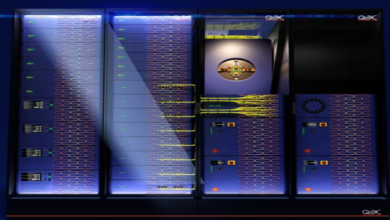Research Nester predicts that the revenue of the GPON market will surpass USD 14 billion by 2036.

The global GPON market is projected to achieve a 6% Compound Annual Growth Rate (CAGR) from 2024 to 2036. By the end of 2036, the market is anticipated to generate a revenue of USD 14 billion, reflecting a substantial increase from the USD 7 billion recorded in 2023.
GPON market
This growth is attributed to the expanding telecommunications industry and advancements in Gigabit Passive Optical Network (GPON) technology, driven by the rising demand for connectivity in homes and offices. The market’s positive trajectory is further fueled by the proliferation of feature-rich applications and websites necessitating high-speed internet access.
The adoption of GPON technology, a fiber-optic telecommunications solution, enables the delivery of high-speed broadband services to residential, commercial, and industrial users. GPON leverages passive optical splitters to efficiently and cost-effectively distribute optical signals among multiple users, providing robust broadband connectivity. Factors such as the increasing migration from copper to optical fiber globally contribute to the market’s growth, as optical fibers offer enhanced broadband capacity compared to copper wires.
Key Highlights:
Market Growth Trends:
The NG-PON2 segment is expected to experience the highest growth.
Europe is poised to lead in revenue generation by the end of 2036.
Asia Pacific is anticipated to achieve the highest Compound Annual Growth Rate (CAGR).
Factors Driving Market Growth:
Rising demand for better fiber quality.
Government initiatives for broadband expansion in Europe.
Rapid expansion of Fiber-to-the-Home (FTTH) networks in Asia Pacific.
Regional Overview:
Europe: The largest revenue is estimated by 2036, driven by the growing use of high-speed broadband and collaborations among telecommunications companies to create extensive 5G network infrastructure.
Asia Pacific: Anticipated to achieve the highest CAGR, with telecom operators aggressively expanding fiber-optic networks, particularly deploying FTTH architectures.
Technology Segmentation:
NG-PON2 is expected to hold the largest market share over the forecast period, offering higher bandwidth allocation, increased split ratio, faster data rates, and enhanced security.
Component Segmentation:
The ONT segment is anticipated to hold a significant share, driven by the proliferation of smart home devices and the demand for connected lifestyles.
The GPON market dynamics are shaped by the increasing demand for high-speed broadband services, government initiatives for digital transformation, and the ongoing rollout of 5G networks globally. The growth of GPON technology aligns with the industry’s transition from copper wires to optical fibers, ensuring more efficient and resilient broadband connectivity. The market’s evolution is underscored by the adoption of GPON in diverse applications, including fronthaul and backhaul for 4G and 5G network technologies.




